Promising Results
Clariant’s new venture in active ingredients for personal care has already made a splash. And the people behind it are only getting started.
Starting something new isn’t always easy, but it can be rewarding. That’s one of the reasons why start-ups are valued the way they are these days – by investors as well as by talented graduates entering the job market. They’re nimble, they tap into social and technological trends, create new markets and shake up old ones. When Ernesto Horikoshi calls his business a start-up, he’s banking on these notions even though his business card reads Clariant, the name of a billion-dollar company with over 18 000 employees worldwide. »We function as a company within the company«, he says. »We’re a very small team, but that makes us agile. In an industry as fast-moving as ours, that is a significant advantage.« The industry in question is cosmetics, more precisely active ingredients for skin and hair care. Whenever a lotion, cream or conditioner claims to have a beneficial effect, it’s usually these active ingredients that do the heavy lifting. Until 2016, Clariant’s production for the cosmetics industry focused on functional ingredients such as emulsifiers, surfactants or preservatives. It wasn’t until January 2017 that the company launched its own Active Ingredients Unit, putting Horikoshi in charge.

300
Active Ingredients lab screened more than 300 genes which are known to be involved in physiological processes of the skin.
Ernesto Horikoshi
Head of the Active Ingredients Unit
Horikoshi perfectly fits the start-up stereotype. As do his surroundings. The suave 36-year-old Brazilian meets us in a mostly vacant office building on the outskirts of Toulouse. It’s part of the Sanofi Biopark. The French multinational pharmaceutical company Sanofi moved out of this vast research campus a few years ago and is now renting out the abundant offices and lab spaces. Horikoshi and his team have installed their headquarters in a handful of offices lining half of a corridor in the main building. What could one day become a big silicon valley-like campus for biotech firms today seems somewhat deserted. The people that are here, however, are here to make a splash. »There are about 15 biotech start-ups here right now«, says Horikoshi as we pass half a dozen young men and women having lunch in the foyer. He wishes them »bon appétit« before turning and whispering »One of our competitors. They are located in the same building.«
ACTIVE INGREDIENTS FROM NATURE
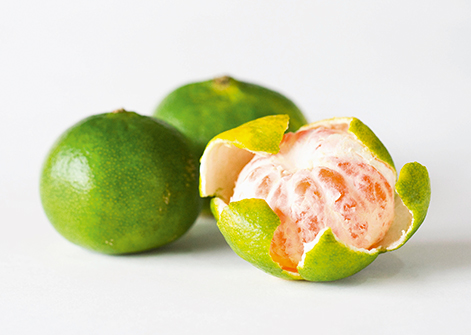
Eosidin™ from green Citrus unshiu
Indoor pollution is a key factor in long term skin problems. Studies show that all over the world levels of indoor pollution exceed the average allowed by the World Health Organization. Eosidin™ is the first product targeting indoor pollution to avoid atopic-prone skin and hypersensitivity. Eosidin™ is a well characterized extract of green citrus unshiu, coming from the protected Jeju Island in Korea.
Find out more at: www.clariant.com/eosidin
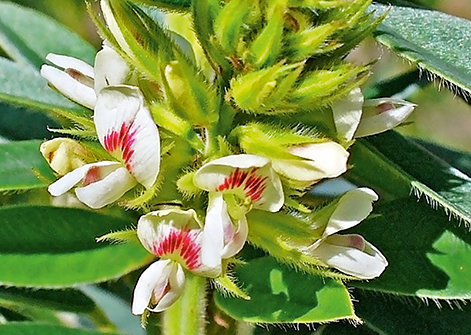
Bluemidin™ from Lespedeza capitata
Scientists say that blue light or High Energy Visible (HEV) light with wavelengths between 400 and 500 nm can penetrate and harm the skin even more deeply than UV light. Bluemidin™ targets effects of so-called screen pollution from computers, smartphones and tablets. Bluemidin™ is extracted from Lespedeza capitata, a plant grown in South Korea and long valued for its medicinal properties.
Find out more at: www.clariant.com/bluemidin
Why Toulouse? »France has been a global powerhouse in cosmetics for decades. So setting up shop here made perfect sense to us«, says Horikoshi. »Our big global customers are all close by, which helps when it comes to both monitoring trends and working together on R&D. Also, Toulouse has some great universities producing a steady stream of young specialists in biotech.« Although, listening to Horikoshi and his right-hand man Alexandre Lapeyre you might get the sense that they could do without offices altogether. They spend about half their time flying around the globe, talking to customers, visiting industry trade shows and building their network. »In this business, people and knowledge matter. Assets don’t«, Lapeyre says. »There are few barriers to entering the market. You don’t need huge production capacities. The biochemistry to make these products is fairly simple.« Horikoshi adds: »What you need are the right people. Bright minds that can turn scientific data into substantiated – and therefore marketable – claims.«
1.2
The size of the global active ingredients market is USD 1.2 billion. It’s projected to grow at an average annual rate of 5.2% for the next five years.
Hanane Chajra has such a bright mind as well as a Ph.D. in biotechnology. Most of her post-doc work dealt with skin substitution. She joined Clariant in early 2017, poached from a competitor — as was most of Horikoshi’s team. »My job was basically to build our scientific capabilities from the ground up«, she says. She filled four labs with equipment to study skin samples – anything from microscopes to state-of-the-art gene sequencing equipment. »Right below us, on the ground floor, you’ll see people working with basically the same equipment. Only they’re doing cancer research«, she says. As she speaks, her colleague Christophe Gonindard is preparing skin samples in order to treat them with a prospective active ingredient. Some will later be exposed to harmful UV light or pollutants in order to test protective agents. Some will be used to construct 3D models that mimic the different layers of human skin. Gonindard and Chajra are wearing the white paper suits, rubber gloves, shoe covers and hairnets ubiquitous in this line of work. »It’s crucial that we not contaminate the skin cells and explants«, says Chajra. A steady stream of these samples arrives at the lab via express courier. »They’re gathered during plastic surgeries. Anonymously of course! All we know is the part of the body it came from, the age and sex of the patient, and whether they were a smoker«, Chajra explains. »For us, the older and more stressed the skin is the better because we usually try to prove restoring effects.« All these effects have to be rigorously documented but also presented in a way that’s easily digestible as part of a sales presentation. »We can show how healthy cells are, how they’re producing collagens and which type, which genetic markers we were able to activate specifically and how all this improved the overall properties of the skin«, Chajra explains. »That’s how we translate data into claims.«
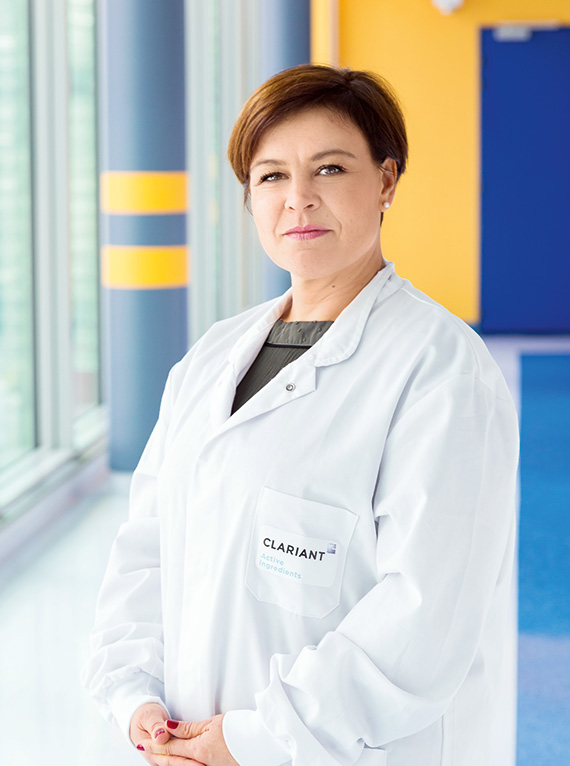
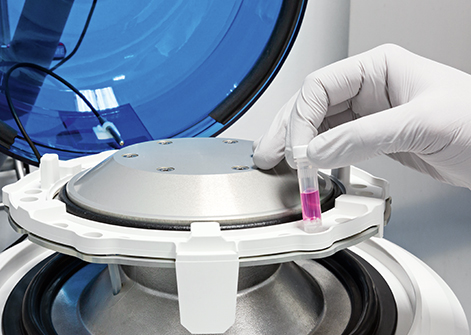
New active ingredients are extensively tested on living skin cells. Effects are analyzed both visually and via genetic markers.
»Everybody here chose to build something new and to challenge themselves.«
Mathilde Frechet Scientific Director
»Claims are what sells«, says Alexandre Lapeyre. He should know. The 29-year-old process engineer with a degree in international marketing was hired in 2016 as a Global Technical Marketing Manager, a few months before the launch of the business unit. He has spent all of his professional career in what he calls »scientific marketing.« It’s not entirely clear if he means marketing scientific results or using scientific methods in marketing new products. He apparently does both. »While you could probably sell a product with an unsubstantiated claim to a consumer, you can’t sell an active ingredient without a substantiated claim«, Lapeyre explains. »Without the effect, there is no active ingredient. There is no product.« Finding out which effects consumers seek or might seek in the future is another science in itself. »We monitor trends not only within the cosmetics market.« One example he gives involves Dyson, a British company known for its vacuum cleaners. »We noticed that they were very successful with a new line of air purifiers that deal with indoor pollution«, says Lapeyre. »So apparently consumers are aware of this problem. And we know the detrimental effects that airborne pollutants like dust or chemical emissions from kitchens, carpets and new furniture can have. But so far, no one in cosmetics was offering a solution.« Within four months the team had a brand new product on the market. Another four months later they received the Innovation Award of the Institute of Technology and Studies for Cosmetics, Toiletries and Fragrances (ITEHPEC). »This type of industry recognition is, of course, huge for us«, says Horikoshi. »We’ve clearly demonstrated how fast we can identify a trend, develop a new product and bring it to a global audience.«
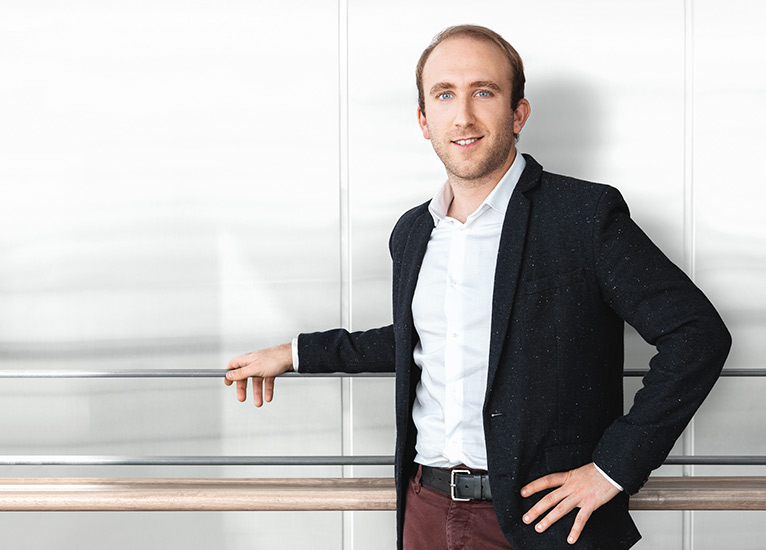
Alexandre Lapeyre
Global Technical Marketing Manager
>1 800
The volcanic island of Jeju is home to more than 1 800 different plant species. Many of them are found only there. In 2016 Clariant formed a partnership with BioSpectrum, a South Korean company renowned for its active ingredients derived from Jeju’s unique flora.
The global cosmetics market moves fast. Tens of thousands of new products are launched every year. Consumers are always looking for innovation, new and improved products – bolder claims, bigger promises. Global giants in beauty products cater to these desires and drive trends worldwide. But there are also strong regional players well attuned to local tastes and sensitivities. »Regional markets differ widely«, says Lapeyre. »Latin America, for example, has a diverse mix of people and skin types. Brazilian consumers are concerned with tanning and moisturizing, while consumers in Japan, South Korea and China look for lighter skin, UV-protection and protection against pollution. Customers in the U.S. and Europe are very conscious about natural and sustainable ingredients.« Another level of complexity comes with different regulations, both of the ingredients and the claims that companies may use. »This is one area where we benefit from Clariant’s years of experience in many global markets«, says Horikoshi. There are other benefits of having a company as large as Clariant behind you. »The brand and its portfolio of formulation ingredients are recognized and highly respected in the industry«, says Horikoshi. »That opens many doors for us with potential customers, and we can also rely on the input of a global sales and marketing team. They’re additional eyes and ears in this market for us.«
TWO STRONG PARTNERSHIPS
Beraca and the Amazonian rainforest
In 2015 Clariant formed a partnership with Beraca, which sources its active ingredients from deep within the world’s largest and most diverse rainforest. The Brazilian company is valued by customers worldwide as a reference for sustainable development. It offers full traceability of all its raw materials and works closely with local communities to foster growth and real opportunities.
BioSpectrum and Jeju island
In 2016 Clariant formed a second partnership with BioSpectrum, a Korean manufacturer of active ingredients. BioSpectrum is renowned for its active ingredients made from extracts from exotic Asian plants found on Jeju island. The volcanic island is home to more than 1 800 different plant species – many of them only found there. Some of these substances are also used in traditional Chinese medicine.
In marketing, stories matter. Especially when it comes to products that touch so profoundly on personal and cultural issues as health and beauty. Clariant’s Active Ingredients Unit may be new to the market, but it sits on a wealth of natural ingredients that not only show beneficial effects but are also imbued with stories. Back in 2015 Clariant established a strategic alliance with Beraca, a Brazilian provider of natural and organic ingredients drawn from deep inside the Amazonian rainforest.
A year later Clariant joined forces with BioSpectrum, whose forte are natural extracts from plants found on Jeju, a volcanic island off the coast of South Korea. In fact, Eosidin™, the award-winning new product tackling indoor pollution, has its origin on Jeju. It targets skin immuno-modulation to improve skin that is prone to atopic conditions and hypersensitivity. Which is industry lingo for something that keeps your skin healthy and beautiful even if your workplace or home have harmful stuff in the air. The basis for Eosidin™ is found in the peel of the green Citrus unshiu, a type of citrus cultivated on Jeju and known for its bright orange flesh and green skin. »The fruits we use are actually a waste product from pruning the trees long before the actual harvest«, Horikoshi explains. Finding an effective ingredient, being the first to substantiate a brand new claim and then using such an especially sustainable resource – Horikoshi sees that as the perfect example why Clariant aims to be a global player in this business. »There are no higher growth rates in cosmetics than in active ingredients right now. No area is more exciting.«
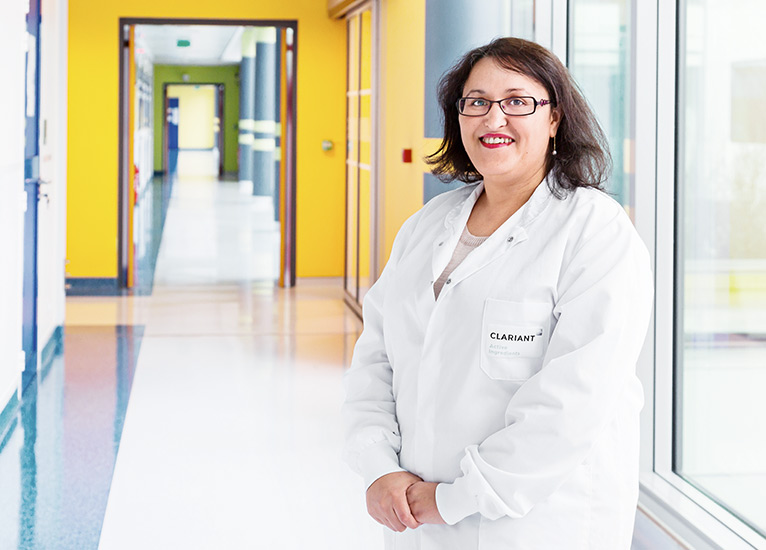
»We can show exactly how we improved the overall properties of the skin.«
Hanane Chajra Head of Skin Biology
A certain excitement was also what drew Mathilde Frechet to Toulouse. She joined Horikoshi’s team in May of 2017 as Scientific Director. Her background is in cellular and molecular pharmacology. Before working in cosmetics for companies in France, she got her Ph.D. and post doctoral experience in Italy and the UK researching genetic instability and prostate cancer. She was just putting down roots in Monaco when she heard of Clariant’s new venture. »I was maybe getting a bit too comfortable in my old job, so I decided to challenge myself«, she says.
As Scientific Director, she is tasked with setting guidelines for Clariant’s R&D in active ingredients. Expectations are high. Eosidin™ has set the bar. »It’s our job to create value for customers«, Frechet says. Does that leave room for scientific curiosity? »Of course, we’re always trying to push our field of research. It’s important to any scientist to publish and present her work.« Frechet was just in Berlin for a conference on skin biology. Chajra came back from Seoul last week, where she presented the biological mechanisms behind Eosidin™. »That’s what’s so great about working here«, says Frechet. »Everybody has chosen to come here, to build something new, to challenge themselves. We all share this adventure.«